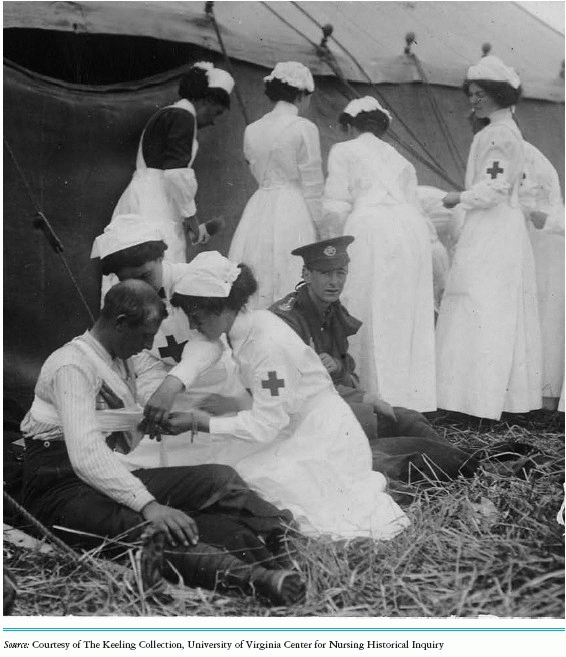Emergency Preparedness in the 21st Century: Two Post-9/11 Case Studies
Lucille Ferrara
Keith Veltri
Michela Catalano
|
The most important aspect of disaster care is pre-disaster planning by the responsible community agencies. This has been demonstrated again and again in such large-scale disasters as tornadoes, hurricanes, transportation accidents, and explosions of inflammable gases, ammunition, plastics, or other highly combustible materials where large numbers of lives are lost and the injured require varying degrees of care (Kinch, 1959, pp. 506-507).
LEARNING OBJECTIVES
By the completion of this chapter, the reader will be able to
Describe the two methods of point of dispensing (POD) care delivery
Reflect on the meaning of emergency preparedness in public health
Discuss the multidisciplinary collaboration needed in emergency preparedness
KEY TERMS
push POD model
pull POD model
2011 marked the 10-year anniversary of the 9/11 attacks. Our nation, our cities, and our lives were changed forever on that Tuesday morning in September. The events of the day and the atrocities that followed affected us all in different ways. The following chapter is both a reflection as well as a report of the accounts of the aftermath of 9/11 in a New York City (NYC) medical center and the response this medical center had with regard to emergency preparedness not only for the medical center community, but for the community and populations it serves. Two case studies are presented to illustrate the medical center’s response to a call to action from the Department of Homeland Security, the Department of Emergency Preparedness for the City of New York, and the NYC Department of Health and Mental Hygiene (DOHMH). Two methods of point of dispensing (POD) care delivery are demonstrated in these cases: the push POD and the pull POD models of rapid immunization and prophylaxis distribution/dispensing. Through these efforts, multidisciplinary collaboration was the common denominator.
Push Point of Dispensing and Pull Point of Dispensing Defined
Two types of POD methods exist: the pull and push POD models. The pull POD model consists of administering mass prophylaxis or vaccines to employees who report to a specific central location. The push POD model utilizes mobile teams to physically bring prophylaxis to the employees, decreasing the amount of time spent away from work. The following case studies illustrate both methods.
The Pull POD: Smallpox Initiative
Background
Bioterrorism was identified as a real threat well before the 9/11 attacks, but increased fear developed following the events of 9/11. Anthrax was the first major bioterrorism event, with cases identified in New York, Washington, D.C., and Florida that were said to have been spread through the mail; this spawned mass hysteria among U.S. citizens. Hospitals began stockpiling Ciprofloxin in order to prepare for a potential anthrax attack/ exposure. Emergency Departments were overwhelmed with patients fearing that they were exposed to anthrax and demanding prescriptions for Cipro to protect themselves and their families. The potential exposure of Anthrax through a bioterrorist attack instilled great fear. The real threat and subsequent danger, however, would lie in the potential exposure to smallpox. Smallpox virus, although eradicated worldwide, is still kept alive and viable in the event of an outbreak where vaccine would need to be mass produced. According to the Centers for Disease Control and Prevention (CDC, 2003), “Although smallpox was declared globally eradicated in 1980, there is concern that smallpox virus may exist outside the two WHO-designated repository laboratories” (p.1). This concern about a potential bioterrorist attack prompted the U.S. House of Representatives, House Select Committee on Homeland Security to mandate the smallpox initiative. Unfortunately, the intended response to this initiative was less than what was expected and the initiative failed. Through the efforts of the state and local DOHMH, the plan was to vaccinate 500,000 first responders in 30 days; however, after one year, only 40,000 were actually vaccinated (U.S. House of Representatives,
House Select Committee on Homeland Security, 2004). Three key factors attributed to this failure were identified: insufficient allocation of resources, an inadequate compensation plan for healthcare workers suffering potential side effects from the vaccine, and healthcare workers and the public’s perceived lack of urgency with regard to a smallpox threat (U.S. House of Representatives, House Select Committee on Homeland Security, 2004). The following case study describes the smallpox initiative of the NYC DOHMH and the medical center’s work in following the directive according to the pull POD model.
House Select Committee on Homeland Security, 2004). Three key factors attributed to this failure were identified: insufficient allocation of resources, an inadequate compensation plan for healthcare workers suffering potential side effects from the vaccine, and healthcare workers and the public’s perceived lack of urgency with regard to a smallpox threat (U.S. House of Representatives, House Select Committee on Homeland Security, 2004). The following case study describes the smallpox initiative of the NYC DOHMH and the medical center’s work in following the directive according to the pull POD model.
The Smallpox Initiative
In October 2002, the NYC DOHMH issued a directive that was part of a federal mandate to vaccinate the 500,000 healthcare workers who would serve as first responders in the event of a bioterrorist attack involving smallpox. Part of this initiative provided education to staff in select hospitals in the NYC area for case identification, surveillance, preparation, and planning in the event of a bioterrorist attack, and to provide training for physicians and nurses to serve as first responders. These first responders would be vaccinated and then trained by the DOHMH staff to be certified as vaccinators as well.
Stay updated, free articles. Join our Telegram channel

Full access? Get Clinical Tree



